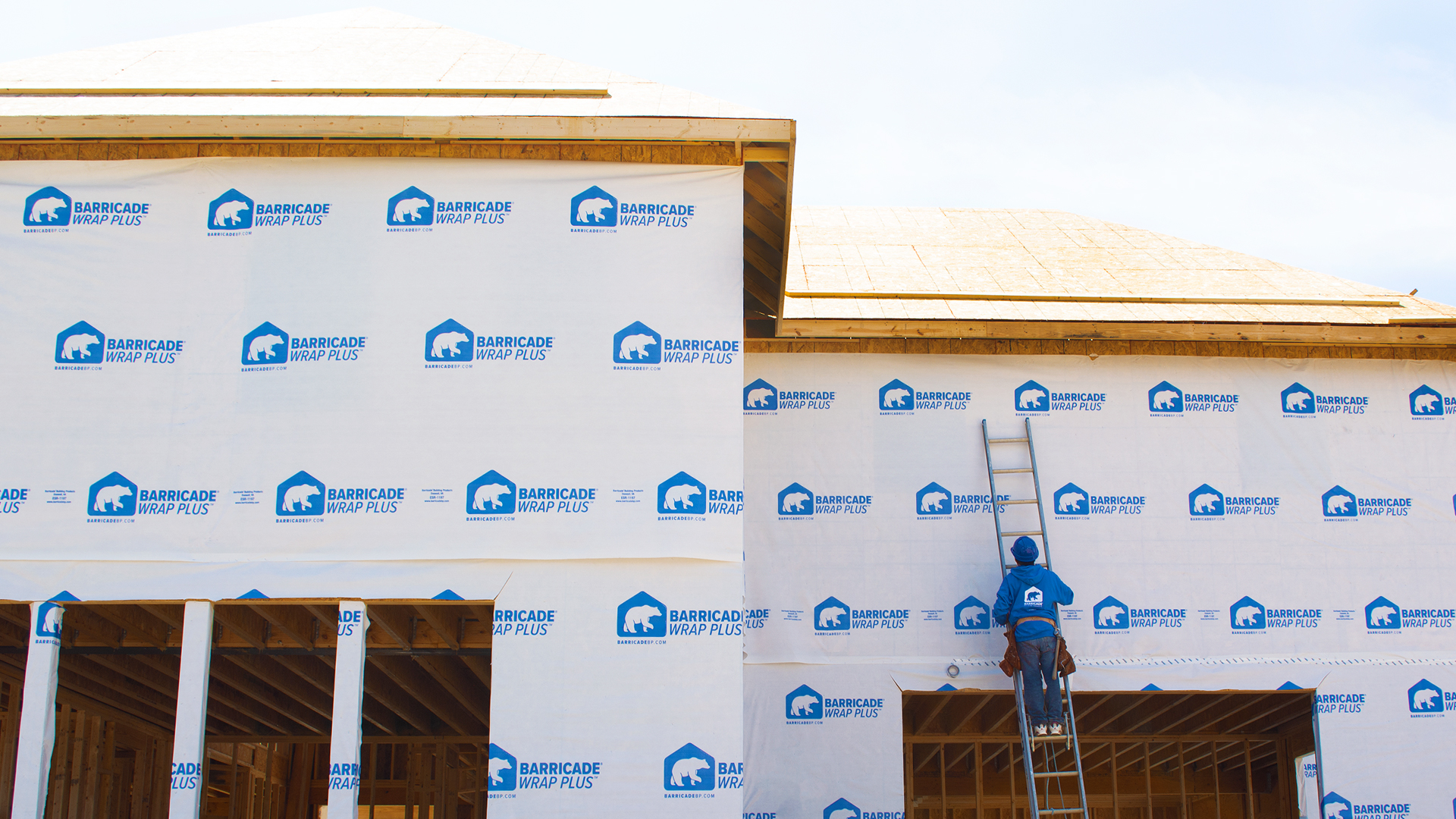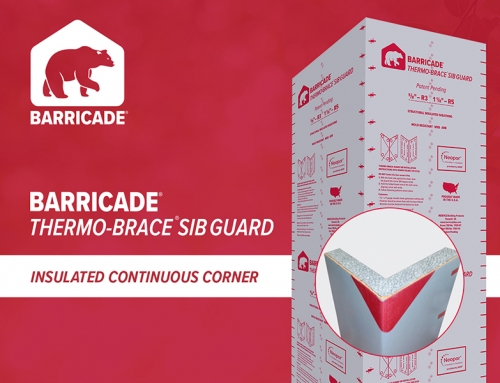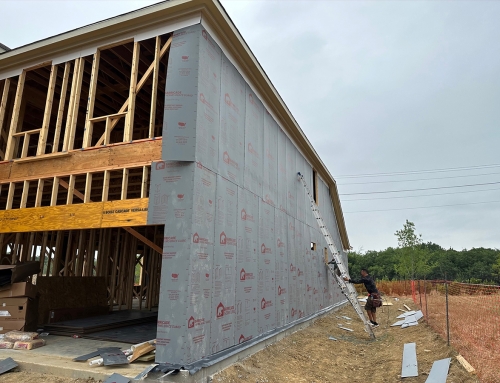Price points and perm ratings can complicate house wrap decisions.
Back in the old days, synthetic house wrap didn’t exist. Plywood and OSB on job sites often got wet, developed mold, and made people sick. Houses rotted and decayed, causing expensive repairs. Things started changing when a Nobel Prize-winning, Italian chemist named Giulio Natta pioneered olefin fibers in the late 1950s.
DuPont took the material a step farther and by the mid-1960’s the practice of adding a layer of felt to sheathing was being replaced by synthetic house wraps that improved water resistance. House wrap is now baked into building codes and produced in a number of variations from several manufacturers which makes picking the right one a bit of a challenge.
Perm Ratings Explained
A lot of the confusion over picking the right wrap often begins when comparing perm ratings. Perm ratings are a standard of measure that calculates how easily water vapor can pass through a barrier. The higher the number, the easier it is for vapor to pass through. This is also sometimes referred to as breathability.
A perm rating of less than 0.1 is considered a Class I impermeable vapor retarder. A perm rating between 0.1 and 1 is considered semi-permeable. A perm rating between 1 and 10 is a Class III and a perm rating greater than 10 is considered highly permeable.
So what’s the magic number? According to the International Code Council, a house wrap must have a perm rating of at least 5. Even though many people believe that higher ratings would be better, building science indicates that higher perm numbers do not necessarily mean the house wrap performs better.
Something Extra
When it comes to picking the perfect number, John Schottelkotte, Midwest sales manager for Barricade likes to stay in the middle with Barricade’s Wrap Plus system. “Many of the experts in the industry claim, and I agree that the ideal perm rating is between fifteen and twenty,” he says. “Our Wrap Plus is sixteen, which is ideal.
Wrap Plus also comes standard with excellent tear resistance, otherwise known as tensile strength, boasting some of the highest ratings in the industry. “Tear resistance is a big one,” says Schottelkotte. “If you’re using the extra labor to put up the house wrap, you definitely don’t want it to blow off.” Wrap Plus also has excellent ultraviolet (UV) light protection which lasts up to 270 days as compared to its biggest competitor which clocks in at 120 days.
Paying Less
Cost is always a factor on today’s job sites, now more than ever due to lumber shortages and the price hikes that come along with them. For builders trying to hit a price point while keeping things safely wrapped up, Barricade offers a builder-grade option with its standard house wrap. It has a perm rating of eleven which is more than double what the code requires. “It has excellent tensile strength and a UV rating of up to twelve months,” says Schottelkotte. “It’s also translucent which makes it easier to install. The framers can see the studs and see what they’re doing.”
Barricade’s entry-level wrap provides excellent performance with a unique design that helps the material breathe without letting in water. The wrap is manufactured with micro-perforations that help boost performance. The tiny perforations are designed and cut in using the perfect angle, size, and direction. The best news is that Barricade’s standard house wrap is very price competitive.
Rock Solid Choice
Builders working with stone, stucco, stone veneers, EIFS, and fiber cement siding have unique building challenges that filter down into their choice of house wrap. Barricade created Wrap Plus-Drainage Wrap, just for the stone guys.
“Drainage Wrap is a product that was invented ten to fifteen years ago,” says Schottelkotte. “Stone, stucco, and fibrous cement applications typically recommend that you use a product that has a ninety percent drainability factor,” he says. “There are small nodules on this product which causes the water to drain better than normal house wrap.”
When working with stone, breathability becomes even more important. Drainage Wrap is designed to create a bond break when used with a layer of felt paper or paper-backed wire lath. The wall drains better and allows moisture vapor to pass through without becoming trapped in the wall cavity.
Going Upscale
For builders who want a wrap with something extra, including a perm rating of 50, Barricade offers R-Wrap, which is the premium way to go. It’s also translucent to ease installation, and it is not affected by pressure washing, chemicals, or tree sap. “It was invented and manufactured to compete with other upscale wraps on the market,” says Schottelkotte. “It’s perfect for builders looking for a higher perm rating.”
All of Barricade’s products are lab-tested by DrJ Engineering based in Madison, Wisconsin to measure perm ratings, tensile strength, and UV protection. DrJ provides technical evaluation reports as well as building design services, structural engineering, and inspection services. When picking the best house wrap it’s best to consider all the lab-tested numbers.
The Bottom Line
Looking at all the important numbers includes the most important of all – price. “When I’m going up against the competition, I’m trying to compare apples to apples,” says Schottelkotte. “I’ll match the perm rating, then talk about UV rating and tensile strength and finally we get to the bottom line, and ours is about twenty percent less expensive.”
All of Barricade’s building materials are made in Doswell, Virginia. The house wrap systems, which include wraps, seam tape, window, and door flashings are covered by a ten-year warranty. The wraps can be printed with custom graphics for builders who want a consistent look on their job sites.
Whether you are looking for an economical choice, a high-performing product in the middle, a wrap specifically designed for stone applications, or a more upscale solution, Barricade has you covered in house wrap. Let us help you pick the right one. For more information <click here>.







